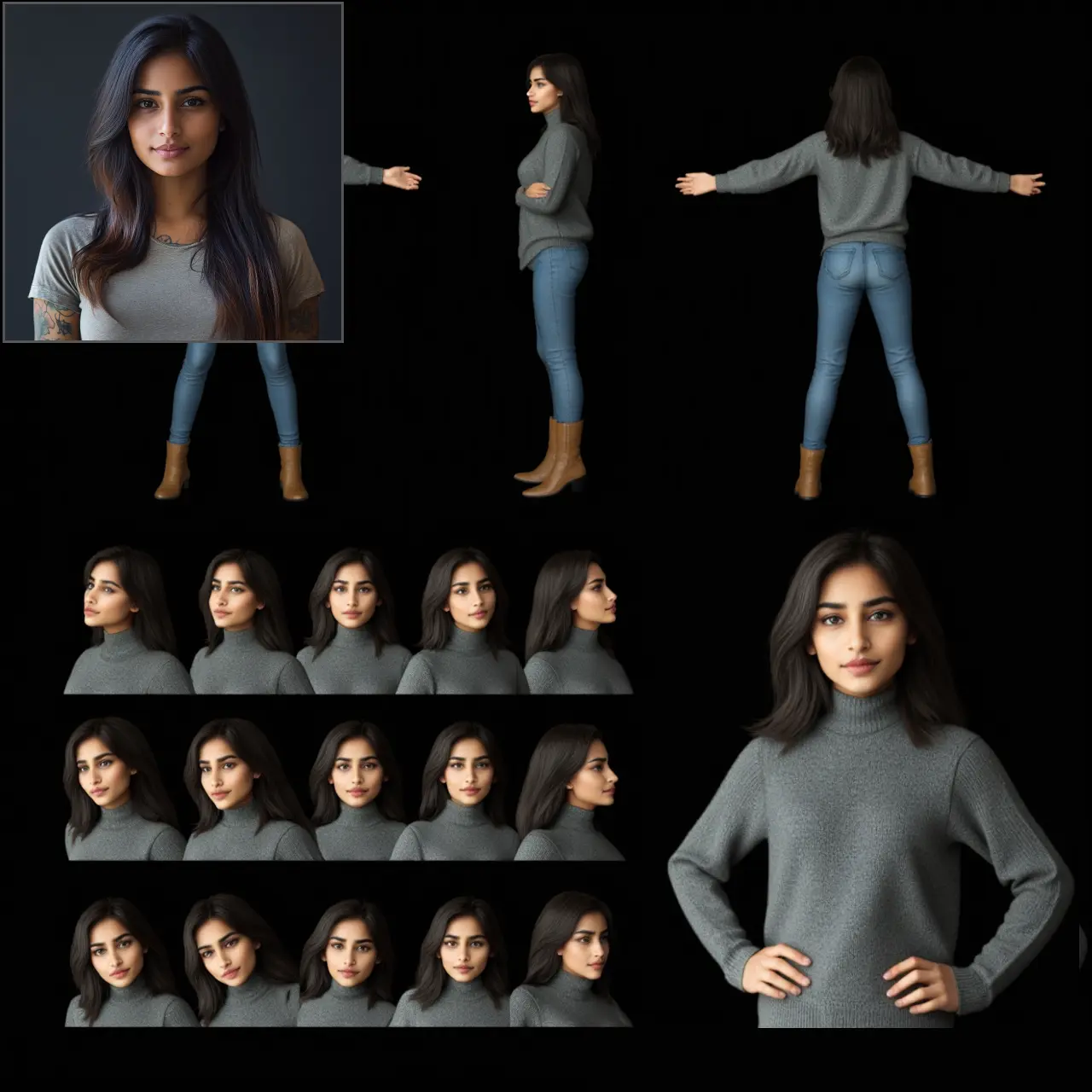ComfyUI Node: CLIP Text Encode for Lumina2
CLIPTextEncodeLumina2
Categoryconditioning
ComfyAnonymous (Account age: 872days) Extension
ComfyUI Latest Updated
2025-05-13 Github Stars
76.71K
How to Install ComfyUI
Install this extension via the ComfyUI Manager by searching for ComfyUI- 1. Click the Manager button in the main menu
- 2. Select Custom Nodes Manager button
- 3. Enter ComfyUI in the search bar
Visit ComfyUI Online for ready-to-use ComfyUI environment
- Free trial available
- 16GB VRAM to 80GB VRAM GPU machines
- 400+ preloaded models/nodes
- Freedom to upload custom models/nodes
- 200+ ready-to-run workflows
- 100% private workspace with up to 200GB storage
- Dedicated Support
CLIP Text Encode for Lumina2 Description
Transform textual prompts into image embeddings for AI artists using CLIP model for precise image generation.
CLIP Text Encode for Lumina2:
The CLIPTextEncodeLumina2 node is designed to transform textual prompts into embeddings using a CLIP model, which are then used to guide a diffusion model in generating specific images. This node is particularly useful for AI artists who want to create images that closely align with their textual descriptions. By encoding both a system prompt and a user prompt, it allows for a nuanced and controlled image generation process. The node leverages the power of the CLIP model to understand and process complex language inputs, making it an essential tool for those looking to produce high-quality, text-guided visual content.
CLIP Text Encode for Lumina2 Input Parameters:
clip
The clip parameter is a reference to the CLIP model that will be used for encoding the text prompts. It is crucial for the operation of the node as it provides the necessary model architecture and weights to perform the text-to-embedding conversion. This parameter does not have specific minimum, maximum, or default values, as it is expected to be a valid CLIP model instance.
user_prompt
The user_prompt parameter is a string input that represents the textual description provided by the user. This prompt is combined with the system prompt to form a complete input for the CLIP model. The content of this prompt directly influences the resulting image, as it dictates the specific elements and style the user wishes to see. There are no predefined constraints on this parameter, allowing for creative freedom in text input.
system_prompt
The system_prompt parameter is a string that represents a predefined prompt used to guide the overall theme or context of the image generation. It is selected from a set of predefined prompts within the node, ensuring consistency and alignment with the intended use case. This parameter helps in setting a baseline or context for the user prompt, enhancing the coherence and relevance of the generated image.
CLIP Text Encode for Lumina2 Output Parameters:
CONDITIONING
The output of the CLIPTextEncodeLumina2 node is a CONDITIONING embedding, which is a numerical representation of the combined system and user prompts. This embedding is used by the diffusion model to guide the image generation process, ensuring that the final output aligns with the textual input. The conditioning embedding is crucial for achieving high-quality, text-aligned visual content, as it encapsulates the semantic meaning of the prompts in a form that the model can interpret and act upon.
CLIP Text Encode for Lumina2 Usage Tips:
- Ensure that the
clipparameter is correctly set to a valid CLIP model instance to avoid runtime errors and ensure accurate text encoding. - Experiment with different combinations of
user_promptandsystem_promptto achieve diverse and creative image outputs. The system prompt can be used to set a general theme, while the user prompt can add specific details.
CLIP Text Encode for Lumina2 Common Errors and Solutions:
ERROR: clip input is invalid: None
- Explanation: This error occurs when the
clipparameter is not set to a valid CLIP model instance, which is necessary for the node to function. - Solution: Verify that the
clipparameter is correctly assigned a valid CLIP model. If using a checkpoint loader node, ensure that the checkpoint contains a valid CLIP or text encoder model.
CLIP Text Encode for Lumina2 Related Nodes
RunComfy is the premier ComfyUI platform, offering ComfyUI online environment and services, along with ComfyUI workflows featuring stunning visuals. RunComfy also provides AI Playground, enabling artists to harness the latest AI tools to create incredible art.


